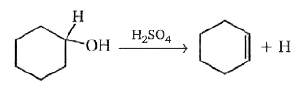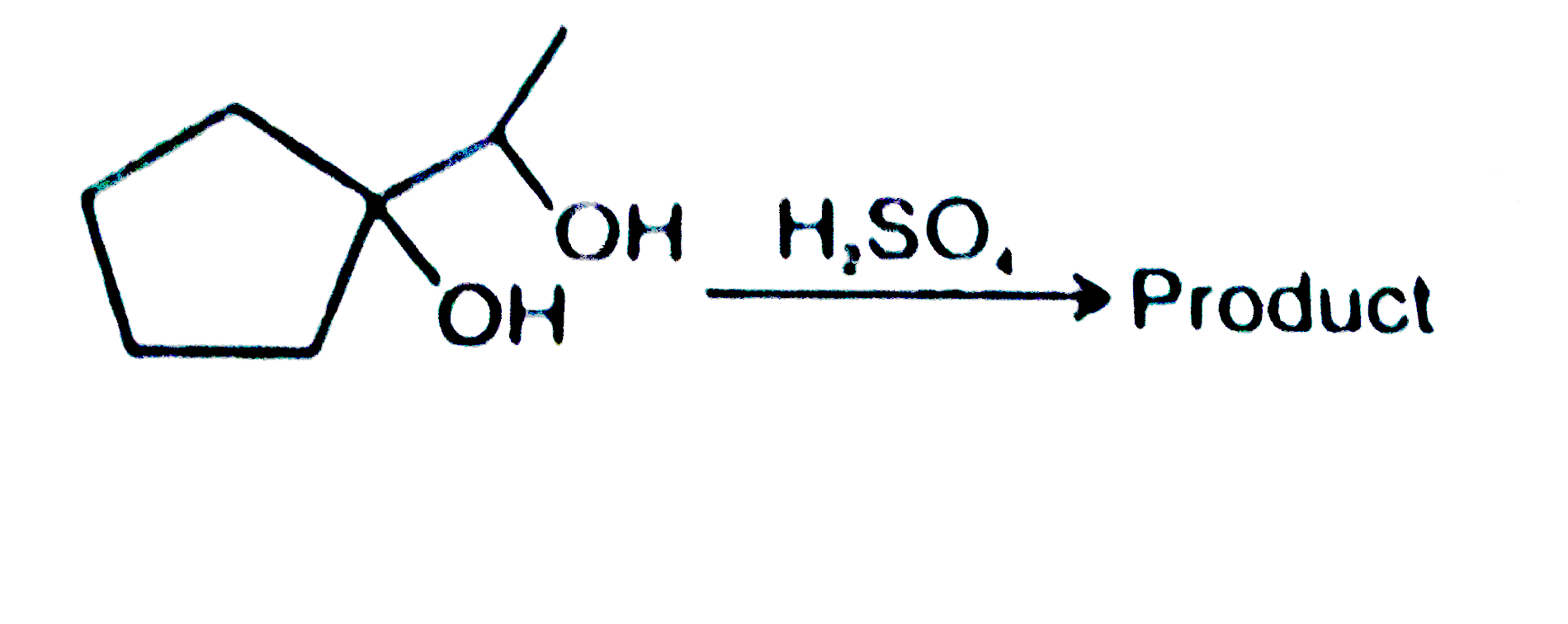Elimination reaction of 2-Bromopentane to form pent-2-ene is:
a) β- Ellimination reaction
b) Follows Zaitsev rule
c) Dehydrohalogenation reaction
d) Dehydration reaction
a),b),c)
a),c),d)
b),c),d)
a),b),d)
To solve the question regarding the elimination reaction of 2-bromopentane to form pent-2-ene, we will analyze each option step by step.
Step 1: Identify the Reaction Type
2-Bromopentane undergoes an elimination reaction to form pent-2-ene. In this reaction, a hydrogen atom and a bromine atom (a halogen) are removed from adjacent carbon atoms. This type of reaction is known as a beta elimination reaction because the hydrogen is removed from a beta carbon relative to the carbon attached to the halogen.
Hint: Look for the definition of beta elimination and identify the carbons involved in the reaction.
Step 2: Apply Zaitsev's Rule
Zaitsev's rule states that in elimination reactions, the more substituted alkene is favored as the major product. In the case of 2-bromopentane, when the elimination occurs, the product formed is pent-2-ene, which has a double bond between the second and third carbon atoms. This product is more substituted than any other possible product (like pent-1-ene), as it has more alkyl groups attached to the double bond.
Hint: Remember that Zaitsev's rule focuses on the stability of the alkene formed, which is determined by the number of alkyl substituents.
Step 3: Recognize the Reaction Mechanism
The elimination of HBr from 2-bromopentane involves the removal of a hydrogen atom and a bromine atom, which classifies this reaction as a dehydrohalogenation reaction. This term specifically refers to the elimination of a hydrogen halide (HBr in this case) from a molecule.
Hint: Look for the components being removed in the elimination reaction to identify the mechanism.
Step 4: Evaluate Other Options
The last option, dehydration reaction, typically refers to the removal of water (H2O) from an alcohol to form an alkene. Since our starting material is a bromoalkane and not an alcohol, this option does not apply to the reaction of 2-bromopentane.
Hint: Differentiate between dehydration and dehydrohalogenation based on the reactants involved.
Conclusion
Based on the analysis:
- The reaction is a beta elimination reaction (Option a).
- It follows Zaitsev's rule (Option b).
- It is a dehydrohalogenation reaction (Option c).
- It is not a dehydration reaction (Option d).
Thus, the correct options are a, b, and c.
Final Answer
The correct answers are:
- a) Beta elimination reaction
- b) Follows Zaitsev rule
- c) Dehydrohalogenation reaction
2-Bromopentane undergoes an elimination reaction to form pent-2-ene. In this reaction, a hydrogen atom and a bromine atom (a halogen) are removed from adjacent carbon atoms. This type of reaction is known as a beta elimination reaction because the hydrogen is removed from a beta carbon relative to the carbon attached to the halogen.
Zaitsev's rule states that in elimination reactions, the more substituted alkene is favored as the major product. In the case of 2-bromopentane, when the elimination occurs, the product formed is pent-2-ene, which has a double bond between the second and third carbon atoms. This product is more substituted than any other possible product (like pent-1-ene), as it has more alkyl groups attached to the double bond.
The elimination of HBr from 2-bromopentane involves the removal of a hydrogen atom and a bromine atom, which classifies this reaction as a dehydrohalogenation reaction. This term specifically refers to the elimination of a hydrogen halide (HBr in this case) from a molecule.
The last option, dehydration reaction, typically refers to the removal of water (H2O) from an alcohol to form an alkene. Since our starting material is a bromoalkane and not an alcohol, this option does not apply to the reaction of 2-bromopentane.
Based on the analysis:
- The reaction is a beta elimination reaction (Option a).
- It follows Zaitsev's rule (Option b).
- It is a dehydrohalogenation reaction (Option c).
- It is not a dehydration reaction (Option d).
The correct answers are:
- a) Beta elimination reaction
- b) Follows Zaitsev rule
- c) Dehydrohalogenation reaction
Similar Questions
Knowledge Check
Which of the following reaction is an elimination reaction ?
A B
B C
C Dboth (a) and (b)
Dboth (a) and (b)Which of the following reactions follows Markovnikov's rule?
AC2H4+HBrBC3H6+Cl2CC3H6+HBrDC3H6+Br2
Which one of the following reagents is not suitable for the elimination reaction?

View SolutionWhich of the following reaction is an example of elimination reaction :
View Solution
The alkene formed as a major product in the above elimination reaction is
View SolutionAlcohols undergo acid catalysed elimination reactions to produce alkenes. Because water is lost in the elimination , this reaction is called dehydration reaction. Secondary and tertiary alcohols always give E1 reaction in dehydration. Primary alcohols whose β-carbon is branched also give E1 reaction. The reactivity of alcohol for elimination reaction is tertiary alcohol > secondary alcohol > Primary alcohol.
Which of the following dehydration product (major ) is incorrect ?
View SolutionAlcohols undergo acid catalysed elimination reactions to produce alkenes. Because water is lost in the elimination , this reaction is called dehydration reaction. Secondary and tertiary alcohols always give E1 reaction in dehydration. Primary alcohols whose β-carbon is branched also give E1 reaction. The reactivity of alcohol for elimination reaction is tertiary alcohol gt secondary school gt Primary alcohol.
Identify the product in the given reaction :

View SolutionRate of Bimolecular elimination (E2) reaction for the following :

View Solution
 is:
is: